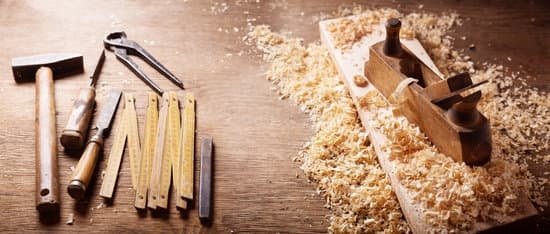When to use dowels in woodworking is a crucial decision that every woodworker must make when joining wood pieces. Dowels are cylindrical rods used to reinforce joints or connect two pieces of wood together, providing strength and stability to the overall structure. Understanding the basics of dowels and their significance in woodworking is essential for creating durable and well-constructed projects.
Using dowels in woodworking offers several advantages that make them a popular choice for joinery. They provide excellent alignment for joining pieces, increase the glue surface area, and add mechanical strength to the joint. Additionally, dowels are relatively simple to use and require minimal tools, making them accessible for woodworkers of all skill levels.
In this article, we will explore the different types of dowels available and their specific uses, specific scenarios and woodworking projects where using dowels is highly recommended, tips on choosing the right size dowel for different applications, necessary tools and techniques for installing dowels, common mistakes to avoid when using dowels in woodworking, and alternative joinery methods. Understanding when to use dowels in woodworking is essential for achieving strong and durable construction in your projects.
Advantages of Using Dowels
Dowel joinery offers several advantages that make it a popular choice for woodworking projects. One of the key benefits of using dowels is their ability to provide strong and reliable joints. When properly installed, dowels create sturdy connections between wood pieces, making them ideal for constructing furniture, cabinets, and other wooden structures. This strength also allows for improved longevity and durability of the finished woodworking project.
Another advantage of using dowels in woodworking is their simplicity and ease of use. Unlike some other joinery techniques that require intricate cuts or specialized tools, utilizing dowels can be a straightforward process. This makes it accessible for both beginner and experienced woodworkers alike. Additionally, dowel joinery can be used with a variety of wood types, sizes, and shapes, providing flexibility in woodworking applications.
In addition to their strength and ease of implementation, using dowels can also contribute to a cleaner overall appearance in woodworking projects. The use of dowels eliminates the need for visible fasteners such as nails or screws on the surface of the wood, resulting in a more seamless and professional finish. This makes dowels particularly well-suited for joining parts that will be visible within the final product, such as edges or corners.
| Advantages | Benefits |
|---|---|
| Strong and reliable joints | Longevity and durability |
| Simple and easy to use | Can be used with various wood types |
| Cleaner overall appearance | No visible fasteners needed |
Types of Dowels
Woodworking projects often require the use of dowels to ensure strong and secure joints between wood pieces. Dowels are cylindrical rods typically made of wood, metal, or plastic that are inserted into corresponding holes in the pieces being joined. Each type of dowel has its specific uses and advantages, making it important to understand the different types available.
One common type of dowel is the wooden dowel, which is made from hardwoods such as beech or maple. Wooden dowels are preferred for their aesthetic appeal, as they can be sanded and stained to match the surrounding wood. They are commonly used in furniture making and cabinetry due to their ability to create durable joints while blending seamlessly with the wood grain.
Metal dowels, on the other hand, offer exceptional strength and durability, making them suitable for heavy-duty applications such as constructing workbenches or structural frameworks. Common materials for metal dowels include steel and aluminum, and they are often used in combination with adhesives for added reinforcement. When woodworking projects require extra support or load-bearing capabilities, metal dowels are an excellent choice.
Plastic dowels provide versatility and ease of use in woodworking projects. They come in various colors and can be used in situations where moisture resistance is necessary, such as outdoor furniture or kitchen fixtures. Plastic dowels are also lightweight and resistant to corrosion, making them a practical choice for certain applications.
Understanding the specific uses and advantages of each type of dowel is crucial when determining which one to use in woodworking projects. By considering factors such as appearance, strength, and environmental conditions, woodworkers can select the most appropriate type of dowel for their specific needs.
| Type of Dowel | Specific Uses |
|---|---|
| Wooden Dowel | Furniture making, cabinetry |
| Metal Dowel | Heavy-duty applications, structural frameworks |
| Plastic Dowel | Moisture-resistant projects (outdoor furniture, kitchen fixtures) |
When to Use Dowels
Dowels are an essential component in many woodworking projects, and there are specific scenarios where using dowels is highly recommended. When considering the use of dowels in woodworking, it’s important to weigh the benefits and advantages they offer. Here are some instances when using dowels is highly recommended:
- When joining wooden panels or boards to create a larger surface area
- For creating strong and durable connections between wood pieces
- When aligning and reinforcing joints in furniture making
- In applications where the aesthetics of the project require concealed joinery
In cabinetry or furniture making, dowels can provide added strength and support to the overall structure. They are also often used when edge-to-edge joints need reinforcement for added durability. Additionally, in projects where traditional nails or screws may not be suitable due to aesthetics or other factors, dowels can offer a visually appealing alternative.
Woodworkers should also consider using dowels when constructing frames, tables, chairs, and other furniture pieces that require secure and lasting connections between different wood components. By choosing the right type and size of dowel for the specific application, woodworkers can achieve reliable results that enhance the quality and longevity of their woodworking projects.
Choosing the Right Size Dowel
When working with dowels in woodworking projects, it is crucial to choose the right size of dowel for the specific application. The size of the dowel will directly impact the strength and stability of the joint, so it’s important to consider a few key factors when selecting the appropriate size.
Here are some tips on how to choose the right size dowel for different woodworking applications:
- Consider the Thickness of the Wood: When joining two pieces of wood together, it’s essential to choose a dowel that matches the thickness of the wood. This will ensure a snug and secure fit, providing maximum strength to the joint.
- Strength Requirements: Depending on the load and stress that will be placed on the joint, you may need to use a thicker dowel for added strength. For heavier applications, such as furniture construction, consider using larger diameter dowels for increased durability.
- Length of the Dowel: The length of the dowel should be sufficient to penetrate both pieces of wood while leaving enough space for glue application. It’s recommended that the dowel penetrates at least two-thirds of its length into each piece of wood for a strong and durable joint.
By taking these factors into consideration, you can ensure that you are choosing the right size dowel for your woodworking project, ultimately leading to secure and long-lasting joints.
Additionally, keep in mind that experimenting with different sizes and types of dowels in scrap or test pieces before committing to your final project can help determine which size will work best for your specific woodworking application.
Tools and Techniques for Installing Dowels
When it comes to woodworking, using dowels as a joining method can be a great way to create strong and reliable connections between wood pieces. To successfully install dowels in your woodworking projects, there are specific tools and techniques that you will need to employ for accurate and precise results.
Necessary Tools and Equipment
One of the most important tools you will need when installing dowels is a doweling jig, which helps ensure that the holes for the dowels are drilled at the exact right angles and depths. Additionally, a drill press or handheld drill with various sized drill bits will be necessary for creating the holes for the dowels. Clamps or vise grips may also be required to secure the wood pieces in place during drilling.
Step-by-Step Process
The first step in using dowels is properly marking where the holes for the dowels need to be placed on each wood piece. Once marked, use a doweling jig to guide your drill and create precise holes at the designated locations. It’s important to carefully align and position the jig to ensure that the holes are perfectly straight and accurately placed.
After drilling all the necessary holes, apply glue into each hole and along the surface of one of the wood pieces that are being joined together. Next, insert the dowels into one of the pieces, then bring both wood pieces together so that they line up perfectly before allowing them to dry with clamps or vise grips holding them tightly in place.
By having a clear understanding of these tools and techniques for installing dowels in woodworking projects, you can achieve strong and durable joints that will enhance your finished creations.
Common Mistakes to Avoid
Improper Dowel Sizing
One common mistake to avoid when using dowels in woodworking is selecting the wrong size for the project. Using dowels that are too small can result in weak joints that are prone to breaking, while using dowels that are too large can cause splitting or damage to the wood. It’s important to carefully measure and test fit the dowels before installation to ensure they are the correct size for the joint.
Poor Alignment
Improper alignment of dowel holes is another mistake that can compromise the strength and integrity of a woodworking project. When using multiple dowels to join two pieces of wood, it’s crucial to ensure that the holes are precisely aligned. Failure to do so can result in a misaligned joint, which not only affects the overall appearance but also weakens the connection between the wood pieces.
Inadequate Glue Application
Another common error when using dowels in woodworking is applying insufficient glue during assembly. In order to create a strong bond between the dowel and surrounding wood, it’s essential to coat both surfaces with an even layer of adhesive before inserting the dowel into the hole. Failing to apply enough glue can lead to a loose or unstable joint, compromising the overall strength and stability of the project.
By being aware of these common mistakes and pitfalls, woodworking enthusiasts can ensure that their projects involving dowels result in strong, durable, and aesthetically pleasing finished products. Understanding how to properly use and install dowels is essential for achieving high-quality woodworking joints that stand the test of time.
Alternatives to Dowels
In conclusion, knowing when to use dowels in woodworking can greatly improve the strength and durability of the joints in your projects. By understanding the advantages of using dowels, such as their ability to create strong and reliable connections between wood pieces, woodworkers can make informed decisions about when to incorporate them into their projects.
It is important to consider the specific scenarios and woodworking projects where using dowels is highly recommended, as they may not always be necessary for every situation.
When considering alternatives to dowels, it’s important to weigh the pros and cons of other joinery methods. For example, while dowels are known for their strength, biscuits or pocket-hole joinery might be more suitable for certain projects. Biscuits are great for aligning boards during glue-ups, while pocket-hole joinery provides a quick and easy way to create strong joints without the need for visible fasteners.
It’s important for woodworkers to remember that there is no one-size-fits-all approach when it comes to joinery in woodworking. Each project may require a different method of joining wood pieces together, and understanding when to use dowels in woodworking versus other joinery methods will ultimately result in stronger, more durable finished products.
Frequently Asked Questions
Why Use Dowels Instead of Screws?
Dowels are often used instead of screws for certain woodworking projects because they provide a stronger and more reliable joint. While screws can strip or loosen over time, dowels create a solid connection between two pieces of wood. This makes them ideal for applications where the joint will undergo significant stress or weight.
What Is the Rule for Dowels?
The general rule for using dowels in woodworking is to make sure that they are properly sized for the job. This means using dowel diameters that are about one-third the thickness of the wood being joined. It’s also important to ensure that the dowel holes are drilled accurately and perfectly aligned to achieve a tight and secure fit.
What Do You Use Wood Dowels For?
Wood dowels are commonly used in woodworking to reinforce joints, add extra support, or increase the overall strength of a project. They can be used to connect two pieces of wood together, align components during assembly, or simply as decorative elements.
Wood dowels are versatile and can be used in various applications including furniture making, cabinet construction, and general carpentry work.

Hi everyone! I’m a woodworker and blogger, and this is my woodworking blog. In my blog, I share tips and tricks for woodworkers of all skill levels, as well as project ideas that you can try yourself.





